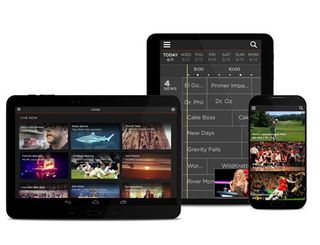Cloud DVRs: Cash From Disruption

In a prime example of the unintended consequences of technology, the DVRs that were supposed to disrupt the TV ad business are being reinvented as cloud-based services that strengthen traditional business models.
After winning a lengthy legal battle with programmers in 2009, Cablevision, Comcast and a few operators have been deploying cloud DVRs for several years. But the technology, which moves the recording and playback features of a traditional DVR from a set-top box in the subscriber’s home to an operator’s facility or the “cloud,” still has a relatively limited reach. In March 2015, Parks Associates estimated that only 4.8 million households around the world had access to cloud DVRs, up from about 2 million in 2014.
The research company is predicting, however, that the number of homes around the world with cloud-based DVRs will see a five-fold increase over the next three years to about 24 million by 2018, with much of that growth occurring in the United States and Europe. “The interest is very strong in North America where a number of operators are launching or in the process of designing cloud-based systems,” Mario Rainville, head of sales for the product line cloud DVR at Ericsson, said.
That demand has prompted some notable improvements in the cloud DVR systems from existing providers such as Arris, Cisco and Ericsson and encouraged Anvato, Imagine Communications and others to launch new cloud DVR systems in recent weeks. “We see a future where every cable operator, every telco, every mobile operator will offer some type of cloud DVR,” as well as a number of SVOD players, said Glenn LeBrun, VP of product marketing, Imagine Communications, which will be showing its new CloudXtream cloud DVR product at the INTX show in Chicago.
For operators the initial advantages are simple: reduced costs for storage and fewer truck rolls to replace DVR hard drives that regularly fail. Even in North America, where more stringent copyright rules require operators to keep “individual” copies of shows rather than sharing the recordings, “you can see a return on investment in 12 months,” Rainville said.
These systems can also provide much greater storage and potentially create new revenue at a time when traditional DVR penetration has leveled off. “You can upsell to additional storage and increase the penetration of DVR services to those who haven’t upgraded,” said Jim Owens, senior director of product management, content delivery business, at Arris.
Currently most operators who have deployed cloud DVRs have simply moved the recording and playback features into the cloud. But those efforts really only scratch the surface of their potential to provide major improvements in TV everywhere offers and advanced advertising. “Phase two will really be about changing the three-screen experience and ads,” Owens said.
Broadcasting & Cable Newsletter
The smarter way to stay on top of broadcasting and cable industry. Sign up below
The recently launched Anvato Cloud DVR, for example, allows users to watch shows that aired several days prior on TVs, tablets, smartphones and other devices without having to remember to record them. “It blurs the lines between live and VOD,” said Alper Turgut, the company’s CEO, who adds that it provides a turnkey solution for operators who are struggling to expand their own TV everywhere offerings.
With traditional DVRs, users can skip through ads and they might not watch a program until after the C3 or C7 windows, which reduces ratings and ad revenue. In contrast, cloud DVRs allow operators and programmers to disable the fast-forward button and create new advertising revenue via dynamic ad insertion, addressable ads or even programmatic markets. “We can make the advertising slots on DVRs much more valuable than they already are,” by replacing older ads or even putting in new promos Conrad Clemson, chief technical officer of Cisco Service Provider Video Software and Solutions, said.
As operators move more operations into the cloud, analytics will become more important, Clemson and others stress. “When you can combine multiscreen content delivery, nDVR [or cloud DVR] and advanced advertising all into one solution, there is a tremendous opportunity to mine data for more targeted advertising and to optimize the offerings for subscribers,” Owens said.
